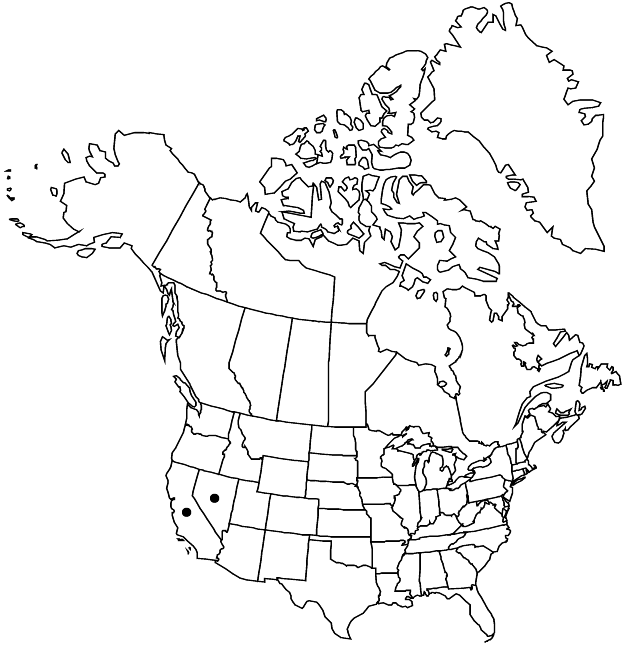Eriogonum glandulosum
in A. P. de Candolle and A. L. P. P. de Candolle, Prodr. 14: 21. 1856.
Herbs, spreading, annual, (0.5–) 1–2.5 dm, glandular, greenish or reddish green. Stems: caudex absent; aerial flowering-stems erect, solid, not fistulose, 0.3–0.7 dm, glandular. Leaves basal, often sheathing up stem 1–2 cm; petiole 0.3–2 cm, glandular; blade broadly elliptic to oval, 0.5–1.5 × 0.5–1.5 cm, pilose-hirsutulous, slightly glandular and greenish on both surfaces, margins entire. Inflorescences cymose, diffuse, spreading and usually flat-topped, 5–20 × 5–30 cm; branches not fistulose, glandular; bracts 3, scalelike, 0.8–1.2 × 0.5–1 mm. Peduncles deflexed or nearly so, straight, slender, 0.2–0.5 cm at proximal nodes, 0.01–0.1 cm distally, sparsely glandular nearly entire length. Involucres narrowly turbinate, 0.8–1.2 (–1.5) × 0.6–1 (–1.3) mm, glabrous; teeth 5, erect, 0.3–0.5 mm. Flowers 1–1.8 mm; perianth white to pinkish with dark reddish-brown to red midribs, densely pilose; tepals monomorphic, narrowly lanceolate; stamens exserted, 1–1.5 mm; filaments glabrous. Achenes black, 3-gonous, 1–1.3 mm, glabrous.
Phenology: Flowering May–Nov.
Habitat: Sandy to gravelly, often calcareous slopes, saltbush and creosote bush communities
Elevation: 900-1600 m
Discussion
Of conservation concern.
Eriogonum glandulosum is a localized species that varies from rare to common in southeastern Inyo and extreme northeastern San Bernardino counties, California, and in southern Nye, northern Clark, and southwestern Lincoln counties, Nevada. The name E. glandulosum may not be the earliest for the taxon. The type of E. cordatum Torrey & Frémont (1845, as “cordalum”) was collected by Frémont most likely near the California-Nevada border, where E. trichopes, E. contiguum, and E. glandulosum occur. Because the description is not decisive, and because J. Torrey and A. Gray (1870) reported the type as missing, it is impossible to place the name unequivocally. Nonetheless, E. cordatum was reported to be glandular (“glaneous”) with the leaves “pubescent above, hairy underneath.” The glandular condition probably eliminates E. trichopes, while those leaf features probably exclude E. contiguum.
Selected References
None.
Lower Taxa
"dm" is not declared as a valid unit of measurement for this property."entire" is not a number."dm" is not declared as a valid unit of measurement for this property.
